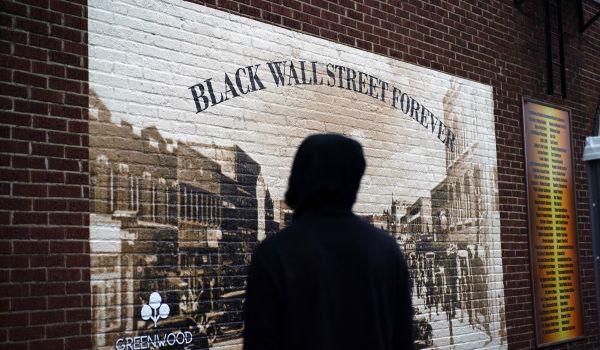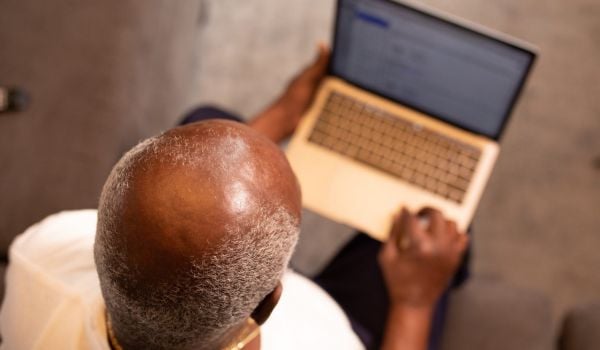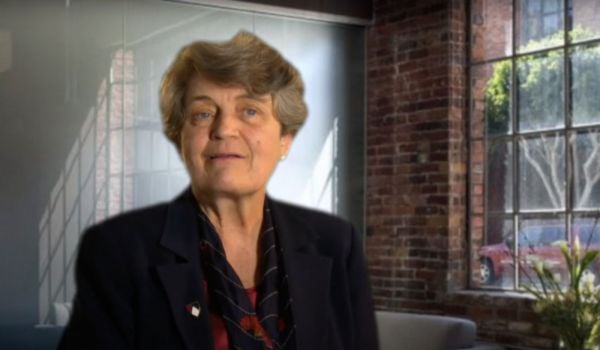“Rust Belt cities were shrinking markets, not growing markets,” Lev Gonick says.
The former chief information officer at Case Western Reserve University, in Cleveland, is talking about how, more than a decade ago, the city’s economy was in such bad shape in the de-industrialized-Rust Belt era, that Gonick couldn’t find anyone from whom Case Western could procure a super-high-speed Internet connection. Not one incumbent provider was willing to make that kind of investment in the Cleveland market, Gonick says.
So Case Western and a number of the other large, publicly funded institutions in town, including healthcare institutions, the regional transit authority, public broadcasters and others realized the only way to be sure that they had a digital future was “to chart their own destiny,” Gonick says. As Next City has previously reported, they created their own 100 GB network.
“We took a bet it could actually be a catalyst for Cleveland,” he adds.
Thirteen years and 2,400 miles of fiber-optic cable later, the community’s collective vision got sweet validation earlier this month — in the form of a $50 million private investment in that super-high-speed network they built.
The bigger picture reveals how a community-owned asset has grown up. In a post-industrial Rust Belt, it’s also a Cinderella story with several possible precedents set along the way.
First, the basics: The network started out as a nonprofit known as OneCommunity. With Gonick as CEO, it was a model of cross-sector collaboration.
“It was a unique approach that came from a lot of entities that don’t often talk to each other, agreeing to work with each other,” says Christopher Mitchell, director for community broadband networks at the Minneapolis-based Institute for Local Self-Reliance. “I alternate between wondering how come we don’t see it more often, and wondering how it happened even once.”
OneCommunity had equity built in from the outset. They sought out universities, schools, hospitals, local governments and other large nonprofits, institutions with a public mission, as their initial customer base. The whole point of the network was to give local Cleveland-area businesses and local governments a competitive edge by keeping a key cost — their monthly Internet bill — relatively stable and affordable.
“If they could start it on their own, they could get together and get that rock-bottom rate,” Mitchell says.
As the network grew, demand started to percolate from customers outside their original mission-driven target market. They eventually accessed seven different kinds of capital to build what became a $200 million fiber-optic network. Online donors. Foundations. Partnerships with universities. Federal stimulus dollars. Bonds issued by the Medina County Port Authority helped build the network. They were among the first to take advantage of federal new markets tax credits. A grant from the U.S. Economic Development Administration allowed OneCommunity to upgrade part of its network, allowing Cleveland to become the first U.S. city to offer 100 gigabit per second commercial Internet, the fastest in the country.
As creative as OneCommunity got, and as quickly as they grew, demand for fiber-optic bandwidth grew faster. The deal flow, the need to raise capital, the day-to-day operations took them further and further away from the work of the nonprofit.
“It led us to fundamentally revisit the business model and ask the question, as a nonprofit chartered in the state of Ohio and as a federal nonprofit to build out the digital economy of Northeast Ohio and assess the community technology needs, was actually owning and operating the network the be-all and end-all of that activity?” Gonick says. “It was the right moment to return to our core mission to grow the digital economy, of which the infrastructure is a critical but insufficient condition.”
OneCommunity and its stakeholders agreed in 2013 that the time came to create a for-profit subsidiary, which they dubbed Everstream, to handle the network business.
“In some ways it was ‘be careful what you wish for,‘” Gonick says.
They didn’t anticipate how much demand there would be once they launched into the for-profit space. Cellular service providers became a huge source of demand — they needed big enough “piping” in the ground to connect the proliferation of cellphone towers to the internet. Your Internet might be wireless for you, but that latest cat video has to travel through the ground somewhere before it gets to you. Regional sports teams, big downtown law firms and financial institutions all came knocking on Everstream’s door.
It was only a matter of time before Everstream took on a large investment in order to meet all that demand — and that’s what transpired this month. With a $50 million infusion of capital, OneCommunity becomes a minority owner in Everstream, with a guaranteed share of revenues as well as two seats on the Everstream board of directors.
Two big risks weighed on the decision to pursue the investment.
The single largest risk, Gonick says, was being able to communicate to community stakeholders why they were taking on the transaction at this time. They had to take time to ensure buy-in from their existing core customers of local governments, universities, healthcare groups, large nonprofits and others.
Second, was finding an investor who could fully understand and appreciate just how complicated OneCommunity had been as a nonprofit network operator. Seven different kinds of funding sources went into building the network, some of them with strings attached — particularly the federal sources of money.
“Could we find an investor prepared to get educated on just how complicated we were and still see their way to the opportunity to ultimately see the rate of return they wanted to realized?” Gonick explains. They did, in the form of Boston-based M/C Partners and investors advised by the Private Equity Group of J.P. Morgan Asset Management.
As a result of the deal, Everstream is moving forward as a standalone organization.
“This transaction allows OneCommunity to leverage the fiber network as a catalyst for growth and an asset upon which to shape a civic agenda around community and business technology priorities in Northeast Ohio,” said Gonick in a statement announcing the transaction.
In terms of the worlds-colliding overlap from nonprofit to for-profit, Mitchell says, “I don’t think I have seen a nonprofit spin off a for-profit network company before. We have not seen a lot of nonprofit networks. A lot are co-ops. A lot are government owned and operated, due to necessity and the ability to access inexpensive capital via bonds to build them.”
When I asked Gonick if Everstream might get certified now as a B-corporation, he said it’s up to their management. Everstream’s incoming CEO is Brett Lindsey, the heretofore COO of OneCommunity.
Notably, there was a flavor of community economic development in Lindsey’s statement when the deal was announced: “This transaction also means more jobs in Cleveland, investment in the network and opportunity for our local partners,” said Lindsey.
The Equity Factor is made possible with the support of the Surdna Foundation.

Oscar is Next City's senior economic justice correspondent. He previously served as Next City’s editor from 2018-2019, and was a Next City Equitable Cities Fellow from 2015-2016. Since 2011, Oscar has covered community development finance, community banking, impact investing, economic development, housing and more for media outlets such as Shelterforce, B Magazine, Impact Alpha and Fast Company.
Follow Oscar .(JavaScript must be enabled to view this email address)









__Sean_Corrigan_from_Cleveland_Sews_(center)__and_Paula_Coggins_from_Oh_Sew_Powerful_(right)_sew_leftover_banners_from_the_NFL_Draft_into_handbags_-_photo_by_Sophie_Kannberg_600_350_80_s_c1.jpeg)







